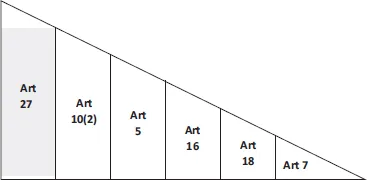
Children, Human Rights and Temporary Labour Migration
Protecting the Child-Parent Relationship
- 304 pages
- English
- ePUB (mobile friendly)
- Available on iOS & Android
Children, Human Rights and Temporary Labour Migration
Protecting the Child-Parent Relationship
About this book
This book focuses on the neglected yet critical issue of how the global migration of millions of parents as low-waged migrant workers impacts the rights of their children under international human rights law.
The work provides a systematic analysis and critique of how the restrictive features of policies governing temporary labour migration interfere with provisions of the Convention on the Rights of the Child that protect the child-parent relationship and parental role in children's lives. Combining social and legal research, it identifies both potential harms to children's well-being caused by prolonged child-parent separation and State duties to protect this relationship, which is deliberately disrupted by temporary labour migration policies. The book boldly argues that States benefitting from the labour of migrant workers share responsibility under international human rights law to mitigate harms to the children of these workers, including by supporting effective measures to maintain transnational child-parent relationships. It identifies measures to incorporate children's best interests into temporary labour migration policies, offering ways to reduce interferences with children's family rights.
This book fills a gap that emerges at the intersection of child rights studies, migration research and existing literature on the purported nexus between labour migration and international development. It will be a valuable resource for academics, researchers and policymakers working in these areas.
The Open Access version of this book, available at http://www.taylorfrancis.com/books/e/9781003028000, has been made available under a Creative Commons Attribution-Non Commercial-No Derivatives 4.0 license
Frequently asked questions
- Essential is ideal for learners and professionals who enjoy exploring a wide range of subjects. Access the Essential Library with 800,000+ trusted titles and best-sellers across business, personal growth, and the humanities. Includes unlimited reading time and Standard Read Aloud voice.
- Complete: Perfect for advanced learners and researchers needing full, unrestricted access. Unlock 1.4M+ books across hundreds of subjects, including academic and specialized titles. The Complete Plan also includes advanced features like Premium Read Aloud and Research Assistant.
Please note we cannot support devices running on iOS 13 and Android 7 or earlier. Learn more about using the app.
Information
Part B
4 Article 27
Is TLM an appropriate form of assistance to parents to meet their children’s development needs?

4.1 Introduction
4.2 The framing of TLM as a form of assistance to parents to provide for their children’s needs
4.2.1 Defining appropriate measures of assistance
i Measures must be effective
Table of contents
- Cover
- Half Title
- Series Page
- Title Page
- Copyright Page
- Dedication
- Table of Contents
- List of illustrations
- Acknowledgements
- Preface: COVID-19
- List of abbreviations
- Note on referencing style
- Introduction
- PART A
- PART B
- Appendix I: Summary of policy measures to reduce interferences caused by TLM with CRC provisions and general legal principles that protect the child-parent relationship in international human rights law
- Bibliography
- Index